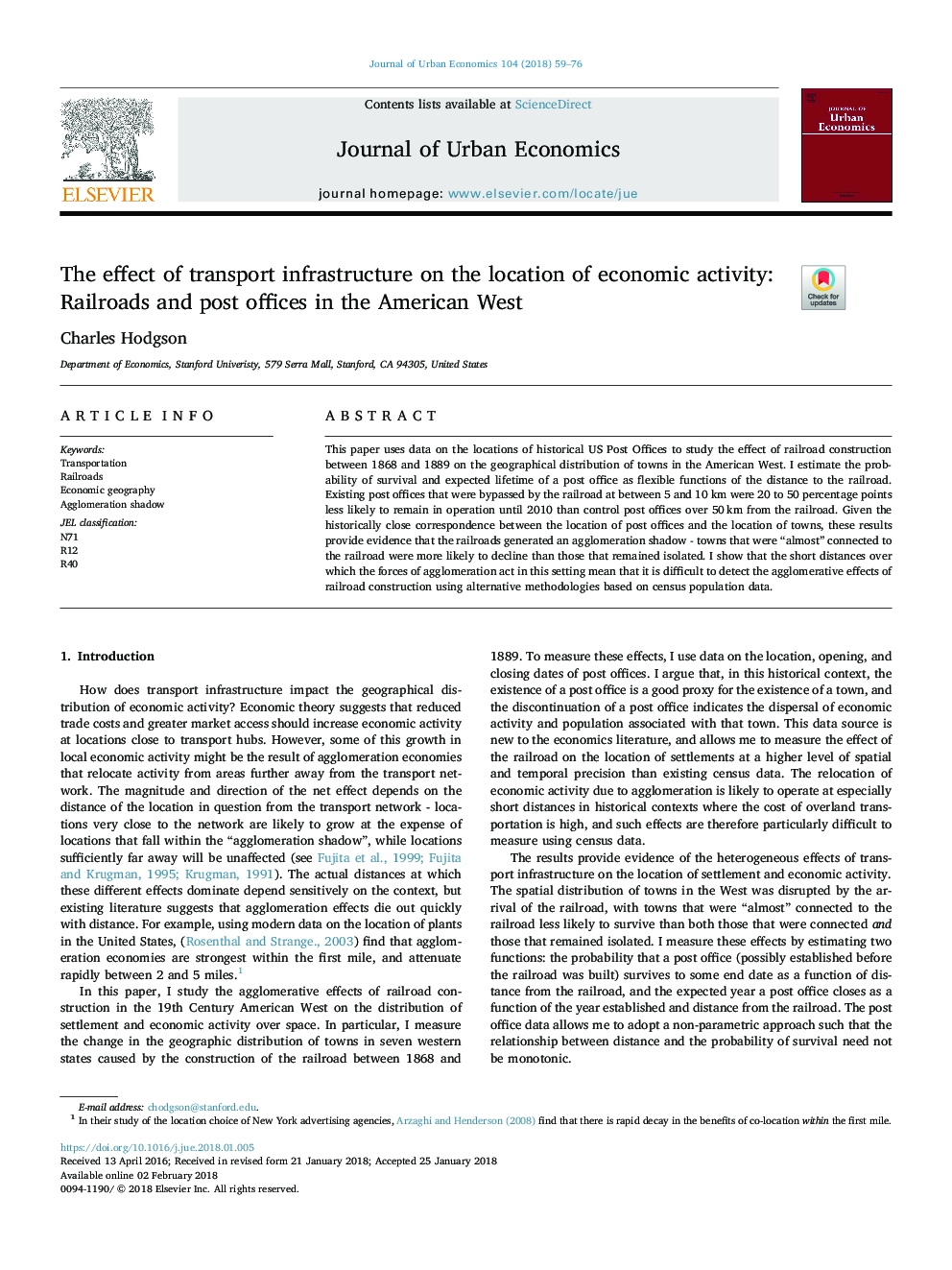| Article ID | Journal | Published Year | Pages | File Type |
|---|---|---|---|---|
| 7370998 | Journal of Urban Economics | 2018 | 18 Pages |
Abstract
This paper uses data on the locations of historical US Post Offices to study the effect of railroad construction between 1868 and 1889 on the geographical distribution of towns in the American West. I estimate the probability of survival and expected lifetime of a post office as flexible functions of the distance to the railroad. Existing post offices that were bypassed by the railroad at between 5 and 10 km were 20 to 50 percentage points less likely to remain in operation until 2010 than control post offices over 50â¯km from the railroad. Given the historically close correspondence between the location of post offices and the location of towns, these results provide evidence that the railroads generated an agglomeration shadow - towns that were “almost” connected to the railroad were more likely to decline than those that remained isolated. I show that the short distances over which the forces of agglomeration act in this setting mean that it is difficult to detect the agglomerative effects of railroad construction using alternative methodologies based on census population data.
Related Topics
Social Sciences and Humanities
Economics, Econometrics and Finance
Economics and Econometrics
Authors
Charles Hodgson,
